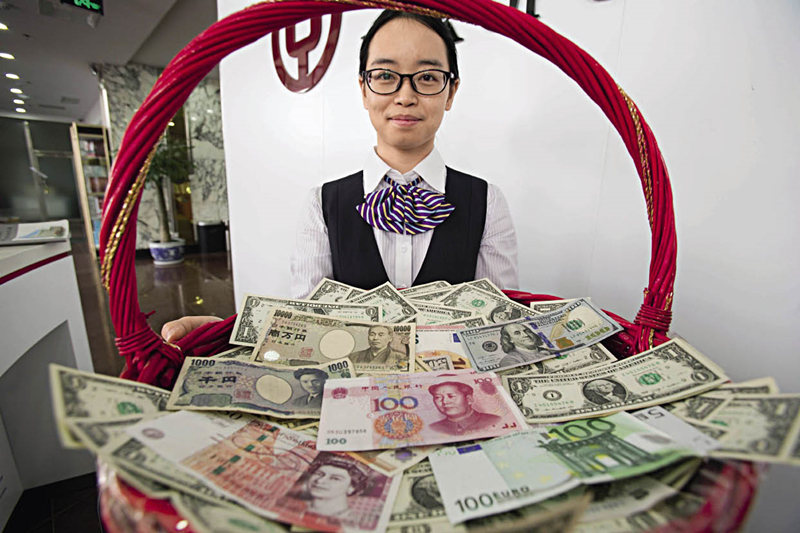China’s RMB Goes Global
China Today by Chai Yifei, December 20, 2016 Adjust font size:
One afternoon in mid-September, Chen Shi was at Frankfurt Airport, having just finished his trip to Europe. Seeing the long queue for tax reimbursement, he worried he would miss his flight, but to his surprise an airport worker called Chinese passengers to come forward for assistance, telling them that they could be reimbursed via Alipay!
“I had no idea I could use Alipay or a Union Pay account overseas,” said Chen, surprised that it was so easy. “All you have to do is write your name, passport number and Alipay account number – and there is no service charge.”
He filled in the necessary form, handed it in and went to catch his plane. Ten working days later, the tax rebate was transferred to his Alipay account in Renminbi (RMB).

The RMB is included in the IMF SDR basket as its fifth currency on October 1, 2016.
What amazed Chen Shi was just a small part of the rapid internationalization of the RMB. Last October, the International Monetary Fund (IMF) included the RMB in its new Special Drawing Rights (SDR) basket, which provides supplementary foreign exchange reserve assets. The RMB has now become a truly global currency, alongside the US Dollar, the Euro, the British Pound Sterling, and the Japanese Yen, and is a reserve currency for many countries and international organizations around the world.
This new status was not achieved overnight, however. The road to becoming a global currency has been rocky.
User-Friendly
Chen Shi was not just satisfied with the ease of his tax reimbursement with Alipay, but also impressed by how widely the RMB was accepted during his trip.
“I only exchanged 200 euros at the airport,” he explained, “because both my transportation and accommodation were paid online in advance. Many shops accept Union Pay and even give discounts to people using Chinese bank cards. Some label their prices in RMB too.”
Fu Hou is a Vietnamese student studying in China. She previously worked as a tour guide in her home country, and noticed that local people encouraged tourists to pay in RMB. When she took Chinese tour groups to the seaside, fishermen were selling buckets of shrimp, crab, fish, and shellfish with prices labeled in RMB. Some would even insist on tourists paying in RMB rather than Vietnamese Dong.
In Thailand, it is customary to leave tips in restaurants. Some Chinese tourists choose to pay in Thai Baht, while others tip in RMB. Waiters are happy to accept RMB. “China is the second largest economy in the world,” said a local waiter. “Chinese people have strong purchasing power around the globe, so there will be plenty of chances to use RMB. I’m not worried that I won’t be able to spend it.”
Marking China’s Economic Achievements
The IMF created the SDR in 1969. Originally, the value of 1 SDR was set at 1 US Dollar, which was equivalent to 0.888671 grams of gold. Since the collapse of that system in 1973, the SDR has become a unit of account for the IMF and provides supplementary foreign exchange reserve assets, defined by a “basket” of leading currencies, each weighted according to its current global prominence in international trade and foreign exchange. The RMB has been given a weighting of 10.92 percent, ranked third after the US Dollar and the Euro.
Including the RMB in the new basket, says Wen Bin, principal researcher for the China Minsheng Banking Corporation, “marks the enhanced international acceptance of the RMB, as well as the achievements of China’s economic reforms.”
Inclusion in the SDR basket is just one sign of the increasing acceptance of the RMB. It has been a long journey towards global prominence. Until quite recently the RMB was not circulated in foreign countries and Chinese nationals were given a foreign currency exchange limit.
According to UN data, in 1978 China only had US $1.6 billion in foreign exchange reserves, and by 1990 the figure was still a mere US $28.6 billion.
“To exchange foreign currency back then, one needed to apply to a foreign exchange administration, and sometimes it even took several months,” said Mei Xinyu, a researcher at the Chinese Academy of International Trade and Economic Cooperation under the Ministry of Commerce.
